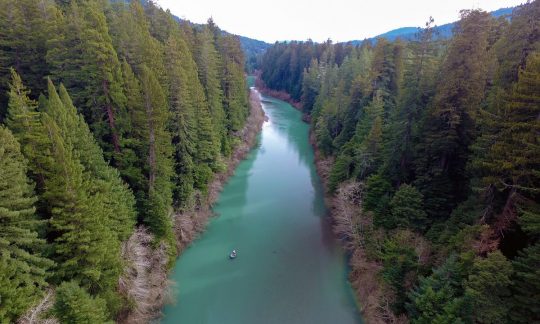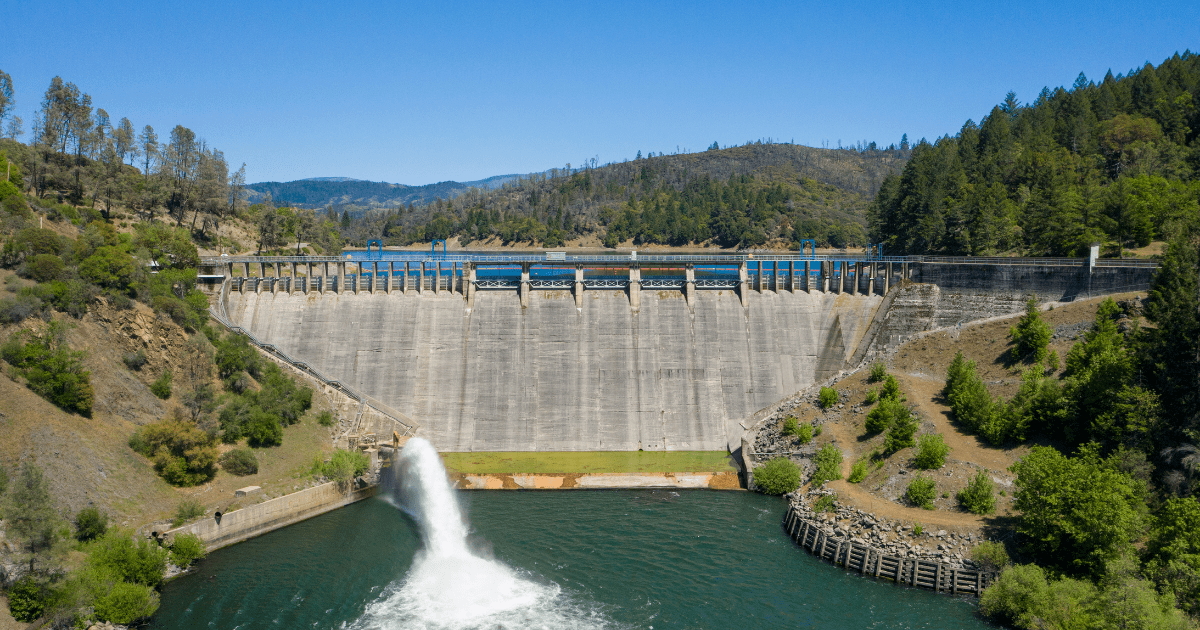PG&E’s License Expires for Eel River Dams
It’s the beginning of the end for the Eel River dams. On April 14, 2022, PG&E’s 50-year license for the Potter Valley Project dams expired and it will not be renewed. The company will soon begin the process of license surrender, decommissioning, and ultimately dam removal. This is an important first step in the long road we must travel until the dams are removed.
Out of the 1,400 dams in California, a great number are critical to keep our communities safe and operating. But many have outlived their functional lifespan and the ecosystem and economic benefits of removal far outweigh the cost of leaving them in place.
Restoration Hope for the Eel
Removing the Eel River dams (Scott and Cape Horn) would provide salmon, lamprey, and steelhead, including endangered summer steelhead, access to more than 280 miles of prime spawning and nursery habitat. Although the Eel River once boasted some of the largest salmon runs in California, the river’s salmon and steelhead populations are all listed as threatened under the Federal Endangered Species Act. Water quality throughout the Eel River is listed as impaired under the Clean Water Act for excessive sedimentation and high temperatures.

There’s hope for a free-flowing Eel. Photo by Mike Wier.
The Eel River dams have also impacted the ability of the Wiyot Tribe to continue its cultural practices. Adam Canter, the Wiyot Tribe’s Natural Resource Director, said in a statement the current situation with dams in place sacrifices the health of the watershed and the communities that rely on it, so the license expiration is “a hopeful moment. The damming of this sacred river, the theft of unceded Eel River water without due protections to our endangered salmon and lamprey, it’s damaging to the Wiyot’s river culture.”
The Eel represents perhaps the greatest opportunity in California to restore an entire watershed and abundant populations of wild salmon and steelhead.
The Fight for Dam Removal
Over the past two years, CalTrout and water users including Sonoma Water and Mendocino County Inland Water and Power Commission, Round Valley Indian Tribes, and Humboldt County have worked within the Federal Energy Regulatory Commission dam relicensing process to find a proactive, science-driven approach to resolving the fate of this outdated water infrastructure.
The Two-Basin Solution Partners worked toward a project developed, in part, by Congressman Jared Huffman’s Ad Hoc Committee – one that would maintain a winter diversion of Eel River water to the Russian River while restoring migratory access to habitat above the dams. However, the Partners were unable to raise the substantial funds needed to begin work on the project and PG&E was unsupportive.
It is clear now that the only path forward for a two-basin solution is via the license surrender and decommissioning process where FERC will order PG&E to submit a plan to decommission the project. PG&E will remain liable for the project and all associated costs until FERC says decommissioning is complete.
CalTrout along with Eel River conservation, tribal, and other NGO stakeholders will continue work to ensure that a free flowing Eel River is the ultimate outcome of the decommissioning process and that dam removal happens expeditiously.
Cover photo by Kyle Schwartz.





